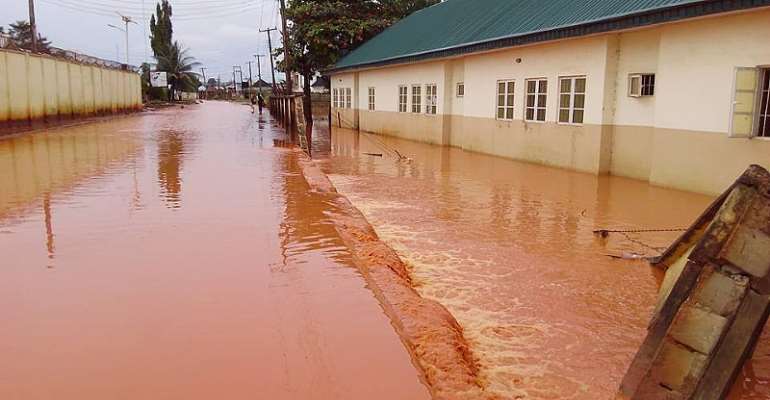Flood To Ravage Delta, Six Other States, NiMet Warns

Despite the widely publicized respite Delta state government claimed it brought to a flood prone community that has suffered unprecedented flooding for over 50 years by the creation of an artificial canal to aid the challenge of residents in the community, the Nigerian Meteorological Agency (NiMet) has sounded another warning of flooding in Delta State.
For over 50 years, residents of Isheagu, an agrarian community in Aniocha south local government area of the state slept with one eye closed due to the fear of uncertainty occasioned by the environmental related challenges caused by flooding that bedeviled the community.
The devastating impacts of the flood over the years have become a bugging playmate which as a matter of fact reportedly ascended to its apex during the rainy season when the rampaging flood water demonstrates it strength leaving the people in a hopeless situation.
It was this development that prompt Governor Ifeanyi Okowa of Delta state to create a 10km artificial canal from Isheagu to the Iyeti river for onward discharge to river Ase, a major tributary of River Niger.
NiMet, in a statement in Abuja over the weekend said, “The current soil moisture condition across Nigeria shows prospects of moderate to severe run-off over Delta, Kaduna, Benue, Anambra, Gombe, Zamfara and Northern Yobe between July and September.
The Head of Public Relations Unit, Mrs Tessy Ushie, explained that NiMet made the prediction in its 2017 Seasonal Rainfall Prediction (SRP), even as the agency had predicted that parts of Nigeria would be affected when the monsoon features becomes well established over the country.
It explained that the first decade of July 2017 witnessed significant positioning of the Monsoon features across the country. According to NiMet, the line separating the dry Easterly winds and the moist South Westerly winds (Inter Tropical Discontinuity) oscillated between latitude 16 degrees North and 19.5 degrees North with mean position of 17.9 degrees North.
“The Northern Hemispheric High (Saharan High) weakened in the period with a gradual retreat to the Mediterranean Sea/Europe in favour of the northward push of the Inter Tropical Discontinuity.
“The Southern Hemispheric High encroached northwards with its 1015 hPa (hemisphere per hour) Isoline extended to the coastal cities of Nigeria thus enhancing the influx of moisture inland at the surface.
“These were engulfed by moist maritime winds in the period except on July 4 that continental winds were observed at the 850hPa”, NiMet stated.
The agency also disclosed that the favourable monsoon conditions had led to adequate moisture in the atmosphere and subsequently precipitated in large amounts that the soil could not absorb.
It said the situation was responsible for the flooding that hit Lagos, Niger, Abuja and some other parts of the country with its attendant destruction of lives and property.
According to NiMet, it is pertinent to note that Victoria Island recorded one fall of 176.5mm rain on July 8 and Lagos Roof near Tafawa Balewa Square had 132.8mm the same day, “Some stations had recorded heavy rainfall the previous day, July7, with 69.8mm and 65.6mm respectively which led to the reported flooding. In order to mitigate future occurrence of such flooding, the public should avoid blockage of water ways and flood plains and ensure clearance of drainage in their environment”.
